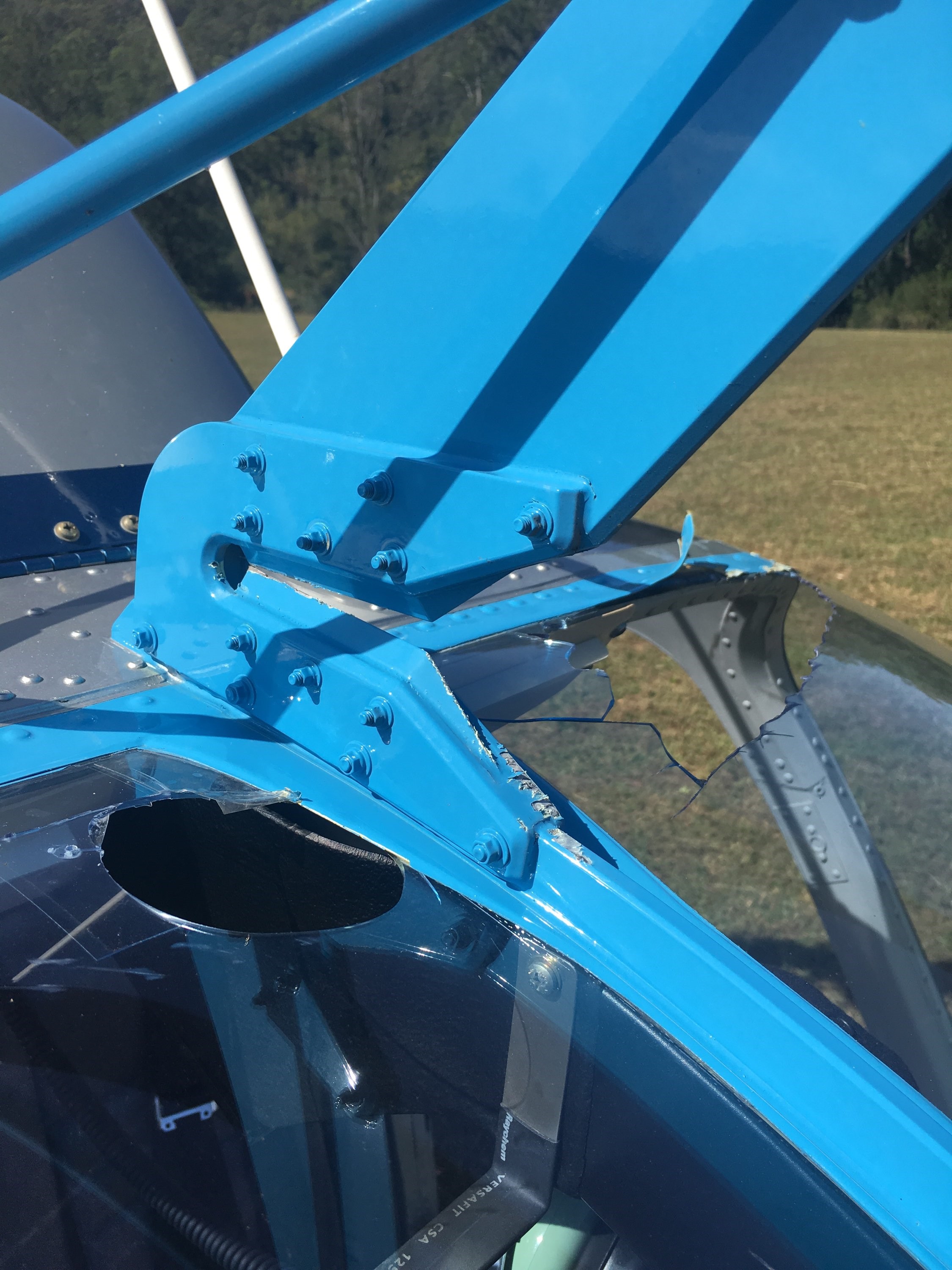| Occurrence Briefs are concise reports that detail the facts surrounding a transport safety occurrence, as received in the initial notification and any follow-up enquiries. They provide an opportunity to share safety messages in the absence of an investigation. |
What happened
On 19 March 2018, at 1340 Eastern Daylight-saving Time (EDT), a Bell Helicopter 206L conducting an aerial weed survey struck an 11 kV powerline.
On board the helicopter was a pilot and three passengers. The scope of work was to track small creeks and rivers in search of noxious weeds. The pilot met the passengers earlier that day at a local airport. Prior to the flight, the crew conducted a job hazard analysis and discussed proposed routes for identification of anticipated hazards. The pilot also gave a detailed passenger brief. During the brief, one passenger was instructed to assist the pilot in identifying hazards such as wires.
Approximately 2 hours 10 minutes into the second flight of the day, at a height of 200 ft, the aircraft struck an unknown and unseen 11 kV powerline. The powerline had a span of 650 m. In addition to the long bay length, trees on one side and a building on the other obscured the poles from sight. The span also ran perpendicular to the main flow of powerlines that ran along the valley.
The powerline was severed by the aircraft’s wire strike protection system (WSPS). The pilot announced the emergency to the passengers and immediately landed the helicopter in a paddock below. The time frame of the incident prevented the pilot from making an external emergency transmission.
Upon landing, the pilot assessed the passengers and found that one had sustained minor injuries. The pilot and one of the passengers walked to a nearby farmhouse, called emergency services and reported the event to the aircraft operator. Emergency services attended the scene 50 minutes later.
Figure 1: Close up of WSPS showing witness marks from wirestrike

Source: Operator
Safety message
It is near impossible for the human eye to detect a thin wire at the distance needed to avoid it in flight. For this reason, pilots often depend on sighting and reading the poles and hardware over which the wire is strung. There are also limits to the field of view of the human eye, meaning a constant scan is required to identify poles. A bay length of 650 m with obscured poles leaves scarce opportunity to identify the hazard.
In aerial survey and spotting work, a pilot must make a trade-off between flying as high as possible to avoid hazards and flying low enough to allow the observers the best opportunity to successfully identify targets. Survey flight will often be below 500 ft. Because wires are so difficult to detect, their presence must be assumed at all times. All helicopter pilots are encouraged to attend a course in wire hazards; these courses teach techniques such as self-briefing, “I can’t see the wires yet” to help maintain a mindset of precaution.
The WSPS served a vital function in protecting the aircraft following the wirestrike. Though effectiveness requires contacting the wire at a suitable angle and airspeed which may not be the case in all low-level work, WSPS should be considered essential equipment in operations below 500 ft.
The pilot was able to land the helicopter immediately in an open paddock, delivering the helicopter to a safe place. When flying at low level, choosing a flight path to maximise availability of suitable forced landing areas is another vital element of protection should the aircraft experience an adverse incident.
ATSB Report Wire-strike Accidents in General Aviation: Data Analysis 1994 to 2004 and the ATSB’s booklet Avoidable Accidents No. 2 - Wirestrikes involving known wires: A manageable aerial agriculture hazard provide further information and guidance.
About this report
Decisions regarding whether to conduct an investigation, and the scope of an investigation, are based on many factors, including the level of safety benefit likely to be obtained from an investigation. For this occurrence, no investigation has been conducted and the ATSB did not verify the accuracy of the information. A brief description has been written using information supplied in the notification and any follow-up information in order to produce a short summary report, and allow for greater industry awareness of potential safety issues and possible safety actions.


